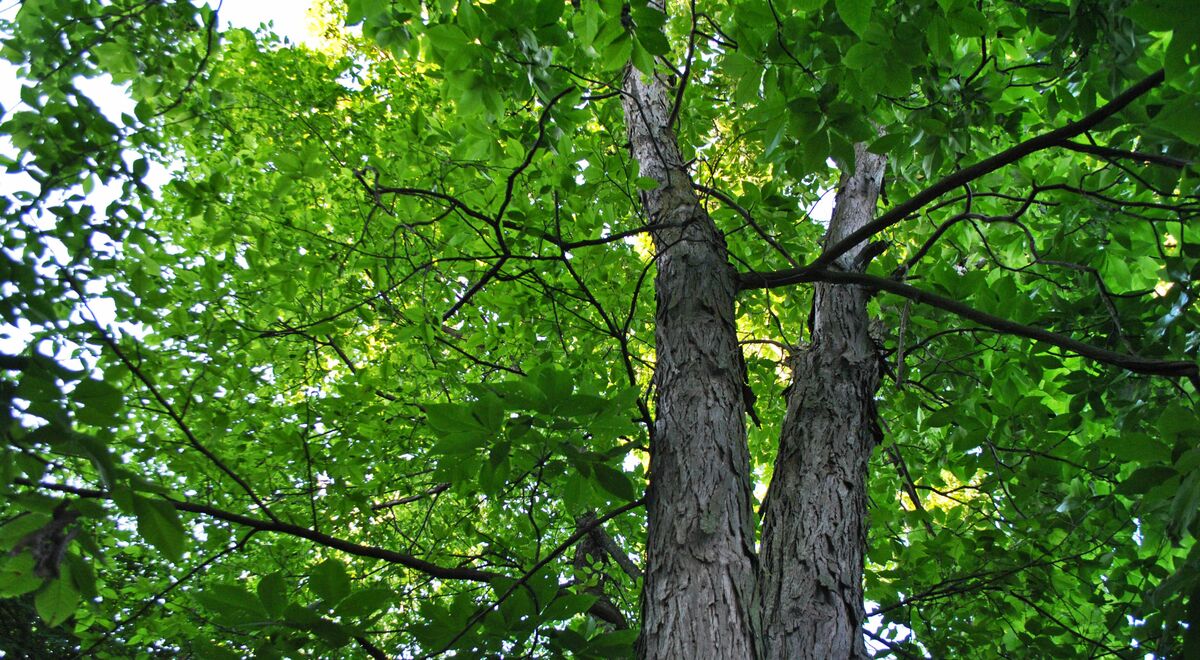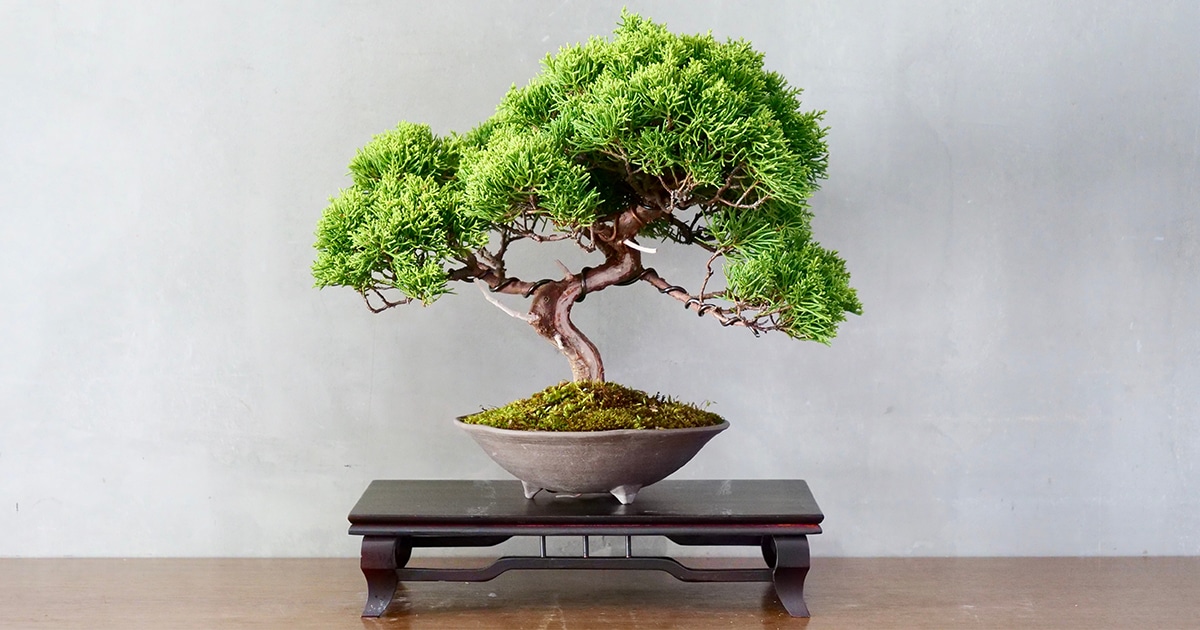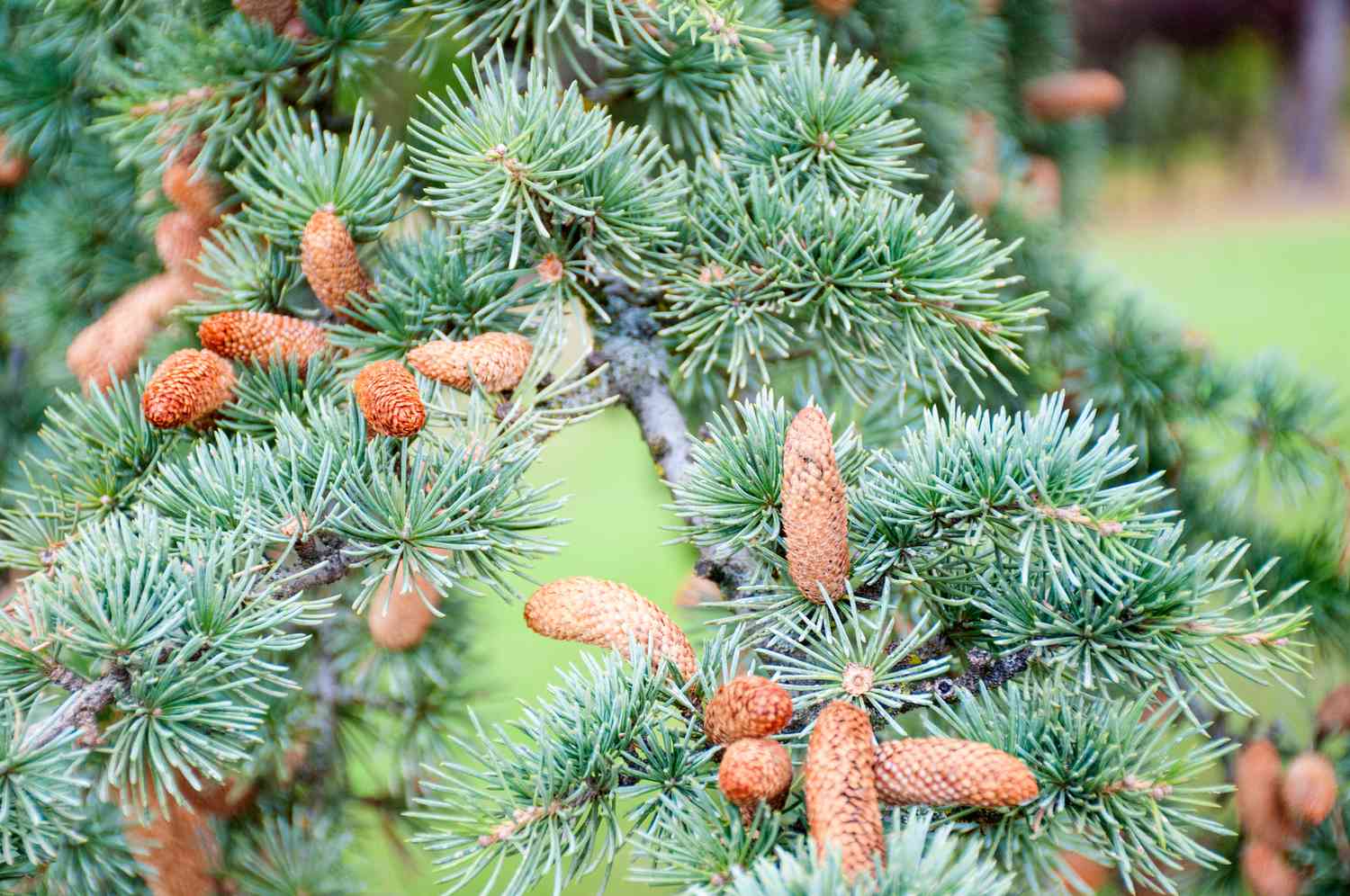Home>Gardening News and Trends>Latest News>What Do Willow Trees Symbolize


Latest News
What Do Willow Trees Symbolize
Published: November 9, 2023
Discover the symbolic meaning of willow trees and stay updated with the latest news on this fascinating topic. Unlock the hidden secrets and explore the ancient wisdom they hold.
(Many of the links in this article redirect to a specific reviewed product. Your purchase of these products through affiliate links helps to generate commission for Chicagolandgardening.com, at no extra cost. Learn more)
Table of Contents
- Introduction
- History of Willow Trees
- Cultural Symbolism of Willow Trees
- Willow Trees in Mythology and Folklore
- Spiritual and Religious Significance of Willow Trees
- Willow Trees in Art and Literature
- Healing and Medicinal Properties of Willow Trees
- Environmental Significance and Ecological Role of Willow Trees
- Contemporary Uses of Willow Trees
- Conclusion
Introduction
Willow trees are a beloved and iconic presence in our natural landscapes, with their gracefully drooping branches and shimmering leaves. These majestic trees have a rich history and hold deep cultural, spiritual, and artistic significance in various societies around the world. From ancient mythology to modern healing practices, the willow tree has played a prominent role in human life for centuries.
The history of willow trees traces back to ancient times, with early references found in Egyptian and Mesopotamian civilizations. These trees have long been associated with water and are often found near rivers, ponds, and wetlands. They are known for their adaptability to various environments, growing well in both moist and dry climates.
With their graceful appearance and delicate foliage, willow trees have captivated the imaginations of countless cultures. The symbolism attributed to these trees varies from society to society but often includes concepts such as resilience, flexibility, wisdom, and renewal. The willow tree’s unique characteristics have also made it a subject of inspiration in art, literature, and various forms of media.
Beyond their symbolic and aesthetic appeal, willow trees hold spiritual and religious significance in many traditions. In ancient Celtic cultures, the willow was associated with the moon and feminine energy, often representing intuition and the ability to navigate emotional currents. In Chinese culture, the willow is revered as a symbol of strength, endurance, and protection against evil spirits.
Willow trees also possess notable healing properties and have been used medicinally for centuries. The bark of the willow tree contains a natural compound called salicin, which is similar to aspirin and is known for its pain-relieving and anti-inflammatory properties. This led to the development of aspirin as a popular medication for various ailments.
From an ecological standpoint, willow trees play a vital role in maintaining ecosystems. Their roots help stabilize soil, preventing erosion and protecting riverbanks from flooding. The dense foliage provides shelter and nesting sites for birds and other wildlife, contributing to biodiversity. Additionally, willow trees are often used in environmental restoration projects due to their ability to absorb excess nutrients and filter pollutants from water.
In modern times, willow trees continue to be valued for their versatility. The flexible branches of certain willow species are used in basket weaving, furniture making, and artistic crafts. Moreover, hybrid varieties of willow trees are being explored as a renewable source of bioenergy, with their fast growth and high biomass production.
History of Willow Trees
The history of willow trees dates back thousands of years, with evidence of their presence in ancient civilizations. These trees have been prominent in Egyptian, Mesopotamian, and Chinese cultures, among others.
In ancient Egypt, willow trees were regarded as symbols of fertility and rebirth. They were often associated with Osiris, the god of the afterlife, and were planted near tombs and burial sites. The Egyptians also valued the willow for its medicinal properties, using its bark and leaves to treat various ailments.
Willow trees were similarly revered in Mesopotamian civilizations, particularly in Babylon and Assyria. The Babylonians considered the willow to be a symbol of the goddess Inanna, associated with love, sexuality, and sensuality. It was also believed that the willow tree had the power to heal and protect against evil spirits.
In China, the willow tree holds a special place in both art and literature. It has been a subject of inspiration for poets, painters, and calligraphers for centuries. The graceful branches, slender leaves, and soft swaying movements of the willow have been deeply admired and depicted in traditional Chinese brush paintings.
Willow trees have also played significant roles in folklore and mythologies around the world. One famous example is the story of the “Weeping Willow” in Western cultures, where the tree is personified as a lamenting figure. In these legends, the tree’s drooping branches symbolize sorrow or longing.
Additionally, willow trees have been associated with water and wetlands due to their preference for moist environments. In Celtic mythology, the willow was connected to rivers and springs, representing the inherent connection between water and life. This symbolism of the willow as a water-loving tree has persisted throughout various cultures.
Throughout history, willow trees have also been utilized for practical purposes. The flexible and sturdy nature of their branches made them ideal for weaving baskets, furniture, and other objects. In fact, the terms “withy” and “osier” refer to the flexible branches of willow trees, which have been used in the art of basketry for centuries.
Today, the history and significance of willow trees continue to be appreciated. These iconic trees serve as reminders of our deep-rooted connection to nature and inspire us with their beauty and resilience.
Cultural Symbolism of Willow Trees
Willow trees hold deep cultural symbolism in various societies around the world. The distinctive characteristics of these trees, such as their graceful appearance and affinity for water, have inspired a wide array of symbolic meanings.
In many cultures, willow trees are associated with themes of femininity, intuition, and emotions. This symbolism can be traced back to their resemblance to flowing hair or the gentle movements of a dancer. In ancient Celtic cultures, the willow is often considered a symbol of the moon and the divine feminine, representing intuition, receptivity, and the ebb and flow of emotions.
In Chinese culture, the willow tree holds significant symbolism and is traditionally associated with strength and endurance. The Chinese see these trees as powerful and resilient due to their ability to bend without breaking in the face of strong winds. The willow is also linked to the concept of protection against evil spirits and is often planted near homes and temples.
Throughout history, willow trees have been admired for their flexibility and adaptability. They can withstand harsh environments, with their roots able to seek out water sources and their branches able to bend with the wind. This symbolism of resilience and adaptability has made the willow a cherished symbol in many cultures.
In some Native American tribes, the willow tree is associated with healing. The tree’s branches and bark are used for medicinal purposes, carrying a spiritual significance that goes beyond the physical attributes of the plant. The willow is seen as a symbol of spiritual renewal and regeneration, offering healing and solace to those who are in need.
In art and literature, the willow tree often represents emotions, melancholy, and introspection. Paintings and poems featuring willow trees evoke a sense of tranquility, sadness, or contemplation. The image of a willow tree with its branches gently swaying in the breeze has come to symbolize a meditative and reflective state of mind.
The cultural symbolism of willow trees is not limited to specific regions but can be found across the globe. These trees hold a universal appeal and evoke emotions and connections that transcend cultural boundaries.
Overall, the cultural symbolism of willow trees depicts themes of femininity, resilience, adaptability, healing, and introspection. This symbolism reflects the profound impact that these majestic trees have had on human cultures throughout history.
Willow Trees in Mythology and Folklore
Willow trees have a prominent presence in mythology and folklore from various parts of the world. These enchanting trees have been woven into captivating tales, legends, and beliefs, often symbolizing themes of magic, transformation, and enchantment.
In ancient Greek mythology, willow trees were associated with the goddess Artemis, the protector of nature and the hunt. According to one myth, Artemis transformed a nymph into a willow tree as a way to protect her from unwanted advances. This story symbolizes the willow tree as a guardian and a shield against harm.
In Norse mythology, the willow tree is linked to the goddess Frigg, the wife of Odin and the motherly figure of the gods. Frigg was known for her wisdom and maternal love, with the willow tree representing these nurturing qualities. The Norse also believed that sleeping under a willow tree would grant prophetic dreams and visions.
In Chinese folklore, the willow tree is associated with spirits and ghosts. It is believed that spirits would seek refuge in the willow’s branches, and the tree was often found near graveyards and temples. The willow tree’s connection to the spiritual realm has inspired many stories and legends surrounding supernatural encounters and ghostly apparitions.
The willow tree has also played a prominent role in Western folklore, particularly in tales of enchantment and transformation. In several European cultures, it was believed that witches used the branches of the willow in their magic spells and potions. Additionally, stories of shape-shifting creatures, such as selkies and mermaids, often involve these mystical beings residing near or transforming into willow trees.
Furthermore, willow trees are known for their strong association with water and the element of magic. In Irish folklore, the willow tree was believed to have the power to grant wishes, particularly those related to love and romance. It was customary for young lovers to make offerings at a willow tree, hoping for their desires to be fulfilled.
Across cultures, the willow tree’s long, draping branches have also been linked to themes of sorrow and mourning. In traditional English and American folk songs, the image of a “weeping willow” represents grief and longing. In these songs, the willow’s sorrowful appearance serves as a reminder of lost loves and the passage of time.
Through mythology and folklore, the willow tree has become a symbol of magic, transformation, enchantment, and otherworldly realms. These captivating stories have taken root in our collective imaginations, adding to the enduring allure and mystical allure of the willow tree.
Spiritual and Religious Significance of Willow Trees
Willow trees hold profound spiritual and religious significance in various traditions around the world. These majestic trees have been revered as symbols of wisdom, connection to the divine, and the embodiment of sacred energies.
In ancient Celtic spirituality, the willow tree was closely associated with the moon, femininity, and the realm of emotions. It was believed that the willow had the power to help navigate emotional currents, strengthen intuition, and foster a deep connection with the spiritual realm. The Celtic druids considered the willow as a tree of inspiration and sought its guidance in matters of the heart and spirit.
In Chinese culture, the willow tree is deeply rooted in religious and spiritual symbolism. It is associated with strength, resilience, and protection against evil spirits. The willow is often planted near temples and used in rituals to ward off negative energies. In Taoist and Buddhist traditions, the willow is seen as a representation of the “yin” energy, embodying gentleness, adaptability, and the ability to flow with life’s challenges.
In Japanese Shintoism, the willow tree is considered sacred and associated with purification and blessing rituals. It is believed that the spirits of ancestors reside in willow trees, and offerings are made to honor and remember them. The willow tree’s connection to water, a purifying element in Shinto beliefs, further enhances its sacred status.
The willow tree also holds significance in various Native American spiritual practices. For some tribes, the willow represents healing and protection. The branches and bark of the tree are used in medicinal rituals, offering physical and spiritual healing. The willow is seen as a bridge between the earthly and the spiritual realms, connecting individuals to the wisdom and guidance of the ancestors.
In Norse mythology, the willow tree is associated with magic and divination. It is believed that sleeping under a willow tree could grant prophetic visions and reveal hidden knowledge. The branches of the willow were also used in rituals to connect with the spiritual realm and seek guidance from the gods.
Throughout history, the willow tree has been a source of inspiration for spiritual seekers and practitioners. Its elegant form, ability to bend without breaking, and its affinity for water have made it a potent symbol of resilience, adaptability, and spiritual nourishment.
Whether used for reflection, purification, healing, or divination, the willow tree continues to be revered as a sacred tree in numerous religious and spiritual practices. Its presence in these traditions reminds us of the profound connection between nature, spirituality, and the human experience.
Willow Trees in Art and Literature
Willow trees have long been a beloved subject in various forms of artistic expression, capturing the imaginations of artists, writers, and poets throughout history. From paintings and sculptures to poems and novels, the willow tree has left its elegant and emotive mark on the world of art and literature.
In visual art, the graceful and flowing form of the willow tree has inspired countless painters, sculptors, and photographers. Its slender branches, drooping leaves, and serene presence have been depicted in landscapes and still life compositions. Artists often use the willow tree’s symbolism to evoke a sense of tranquility, melancholy, or the passage of time.
One of the most notable examples of the willow tree in art is the famous painting “The Weeping Willow” by Claude Monet. This masterpiece showcases a large willow tree with its branches hanging over a shimmering pond. Monet’s use of soft brushstrokes and muted colors captures the essence of the willow tree’s ethereal beauty.
In literature, the willow tree has been a recurring motif, signifying various emotions and themes. It is often used to convey a sense of melancholy, longing, or introspection. Poets such as William Wordsworth, John Keats, and Emily Dickinson have all employed the willow tree as a powerful symbol in their works.
Shakespeare, in his play “Hamlet,” includes a famous scene where Ophelia, in her state of madness, sings a mournful song about a willow tree. The willow is used to symbolize grief, loss, and the fragility of life. This poignant moment showcases the enduring presence of the willow tree in literature as a symbol of sorrow and reflection.
Additionally, the willow tree features prominently in folklore and fairy tales, often representing magic, transformation, and enchantment. Stories of shape-shifting creatures or witches residing near willow trees abound in many cultures. These tales emphasize the mystical allure and otherworldly qualities that the willow tree embodies.
Through art and literature, the willow tree leaves an indelible impression on our creative expressions. It serves as a source of inspiration, evoking emotions, and transporting us to ethereal and dreamlike realms. The willow tree’s symbolic presence in these artistic realms continues to captivate audiences and enrich our understanding of the natural world.
Healing and Medicinal Properties of Willow Trees
The willow tree has long been recognized for its remarkable healing and medicinal properties. For centuries, various cultures across the world have utilized different parts of the willow tree to alleviate pain, reduce inflammation, and treat a range of health conditions.
One of the key medicinal components of the willow tree is a compound called salicin. Salicin is a natural form of salicylic acid, which is similar to the active ingredient found in aspirin. The bark of certain willow species, such as the white willow (Salix alba), contains high levels of salicin. When ingested, salicin is converted into salicylic acid in the body, providing pain-relieving and anti-inflammatory effects.
The use of willow tree bark for medicinal purposes dates back thousands of years. Ancient Egyptian, Greek, and Roman civilizations employed willow bark as a remedy for pain, fever, and inflammation. The bark was often made into a tea or chewed directly to relieve headaches, joint pain, and menstrual cramps.
In modern times, the willow tree’s medicinal properties have led to the development of aspirin as a widely used medication. Aspirin, derived from salicylic acid, is a popular over-the-counter drug that is primarily used for pain relief, reducing fever, and preventing blood clotting.
Furthermore, apart from its pain-relieving properties, the willow tree is also known for its antimicrobial and antiseptic qualities. The bark and leaves of some willow species contain compounds that exhibit antimicrobial action, which can help combat certain bacteria and fungi.
It is worth noting that while the willow tree’s medicinal properties are significant, caution should be exercised when using it as a remedy. As with any medication or herbal remedy, it is important to consult a healthcare professional before using willow tree preparations, especially if you have underlying health conditions or are taking other medications.
In addition to its direct medicinal applications, the willow tree has also played a role in indirect healing practices. The image of a weeping willow, often associated with a serene and contemplative atmosphere, has been used in therapeutic settings to promote relaxation, stress reduction, and emotional healing.
The healing properties of the willow tree extend beyond the physical realm, serving as a reminder of the ways in which nature can provide comfort and support for overall well-being.
Environmental Significance and Ecological Role of Willow Trees
Willow trees play a vital role in maintaining healthy ecosystems and have significant environmental significance. These majestic trees contribute to biodiversity, habitat creation, and ecological balance in various natural landscapes.
One of the primary environmental benefits of willow trees is their ability to stabilize soil and prevent erosion. The extensive root systems of willows help bind the soil together, reducing the risk of landslides and erosion caused by wind and water. This is particularly crucial in areas prone to flooding or where the soil is unstable.
Willow trees also have a unique relationship with water. Being riparian species, they are often found growing along riverbanks, streams, and wetlands. Their roots have a remarkable capacity to absorb excess nutrients and filter pollutants from water, improving water quality and supporting the health of aquatic ecosystems. The presence of willows on riverbanks also helps regulate water levels, mitigating the impacts of flooding.
The dense foliage of willow trees creates a valuable habitat for numerous species of birds, insects, and small mammals. The branches and leaves provide shelter, nesting sites, and feeding opportunities for various wildlife, enhancing biodiversity and supporting local ecosystems.
Willow trees’ role in supporting biodiversity extends beyond providing habitat for animals. Their flowers and leaves attract pollinators such as bees and butterflies, contributing to the pollination of other plants in the area. Additionally, the fallen leaves of willow trees serve as a natural source of organic matter, enriching the soil with nutrients as they decompose.
When it comes to land restoration projects, willow trees are often utilized due to their ability to grow quickly and establish themselves in challenging environments. Their robust growth can help control soil erosion on degraded lands, facilitate the phytoremediation of polluted sites, and aid in the restoration of damaged ecosystems.
Furthermore, willow trees have been recognized for their potential in sustainable energy production. Certain hybrid varieties of willows, called biomass willows, are being cultivated for their high biomass yields. These fast-growing trees can be harvested and used as a renewable source of bioenergy, providing a viable alternative to fossil fuels and reducing carbon emissions.
The environmental significance of willow trees emphasizes their contribution to the health and sustainability of ecosystems. Their role in preventing erosion, improving water quality, enhancing biodiversity, and supporting land restoration underscores the invaluable benefits that these trees offer to the environment.
Contemporary Uses of Willow Trees
Willow trees continue to be valued for their versatility and practical applications in contemporary society. From ecological restoration to artistic craftsmanship, these majestic trees find a wide range of uses in various fields.
One notable contemporary use of willow trees is in environmental restoration projects. The fast growth and extensive root systems of willows make them ideal for stabilizing soil, preventing erosion, and improving water quality. They are often planted in riparian zones, wetlands, and areas affected by mining or construction activities to restore damaged ecosystems.
Willow trees are also valued for their aesthetic appeal and are often planted in landscaping and garden designs. The graceful and weeping forms of certain willow species, such as the weeping willow (Salix babylonica), add an elegant and serene touch to gardens, parks, and public spaces.
Moreover, the flexible branches of some willow species are highly sought after in the art of basket weaving and furniture making. Withy or osier, as the flexible willow branches are known, are used to create intricate baskets, chairs, and other woven objects. The versatility of willow allows for both functional and decorative creations.
Willow trees are also being explored for their potential in sustainable energy production. Hybrid varieties of willows, known as biomass willows, are cultivated for their high biomass yields. These fast-growing trees have the potential to provide a renewable source of bioenergy, with their wood chips and pellets used for heating, electricity generation, and biofuels.
Furthermore, willow trees offer great potential in phytoremediation projects. Their robust root systems can help remove pollutants from contaminated soils by absorbing and storing heavy metals and other contaminants. This makes willow trees valuable in cleaning up sites that have been polluted by industrial activities or accidents.
More recently, derivative products of willow trees, such as willow bark extract, are gaining attention in the cosmetic and skincare industry. Willow bark extract contains salicylic acid, which has exfoliating and anti-inflammatory properties. It is used in various skincare formulations, offering a natural alternative for treating acne, reducing inflammation, and promoting healthy skin.
The contemporary uses of willow trees range from ecological restoration and artistic craftsmanship to sustainable energy production and skincare. These versatile trees continue to provide practical benefits in modern society while maintaining their timeless allure and elegance.
Conclusion
Willow trees, with their graceful beauty and rich symbolism, hold a special place in human culture and the natural world. From ancient civilizations to modern society, these majestic trees have been revered for their cultural, spiritual, and artistic significance.
The history of willow trees stretches back thousands of years, with references found in various mythologies, folklore, and religious practices. They have been associated with concepts such as femininity, resilience, healing, and magic, transcending cultural boundaries.
In addition to their symbolic value, willow trees offer tangible benefits to the environment and human well-being. Their role in stabilizing soil, preventing erosion, and improving water quality showcases their ecological significance. Furthermore, willow trees have been utilized in ecological restoration projects, basket weaving, furniture making, and even as a renewable source of bioenergy.
From a medicinal standpoint, willow trees have provided relief for centuries. Their bark, containing salicin, has been used in traditional medicine to reduce pain and inflammation, leading to the development of aspirin as a widely used medication.
The timeless allure of willow trees continues to inspire artists, poets, and writers in their creative endeavors. Whether depicted in paintings, featured in poems, or included in folklore and fairy tales, the willow tree captures the imagination and evokes emotions of tranquility, melancholy, and introspection.
Overall, willow trees remind us of the deep interconnections between humans and the natural world. They embody the resilience, adaptability, and wisdom that we strive for in our own lives. As we appreciate the beauty and significance of willow trees, let us also strive to protect and conserve these remarkable trees for future generations to enjoy and benefit from.







